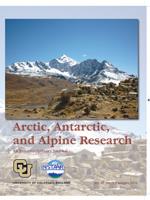Warming temperatures in the Arctic are resulting in greater plant growth, particularly deciduous shrubs, in a phenomenon termed the “Greening of the Arctic.” Local expansion of deciduous shrubs is most likely resulting from vegetative growth, while the contribution of recruitment from seed is unknown. Here we compare seeds dispersed from plant communities created by experimental nutrient addition for 5 or 22 years with those from a community of sedges, deciduous shrubs, and evergreen shrubs at ambient soil nutrients. Nutrient addition decreased species richness and diversity and shifted the plant community toward dominance by dwarf birch, Betula nana, and a forb, Rubus chamaemorus. Generally, the composition of the seed rain resembled the adjacent plant community for deciduous shrubs, but not for other growth forms. Total seed abundance and proportion and total abundance of deciduous shrub seeds were greater adjacent to plots fertilized for 22 years. The deciduous shrub seed response was driven by a dramatic increase in seeds dispersed by Betula, resulting in lower taxa diversity, but not richness, of seed rain. These results suggest that increased shrub abundance will affect local seed dispersal, providing additional propagules for germination and increasing opportunities for reproduction by seed to be an important factor in the Greening of the Arctic.
How to translate text using browser tools
1 February 2015
Effects of Increased Soil Nutrients on Seed Rain: A Role for Seed Dispersal in the Greening of the Arctic?
Laura Gough,
Heather Bass,
Jennie R. McLaren





